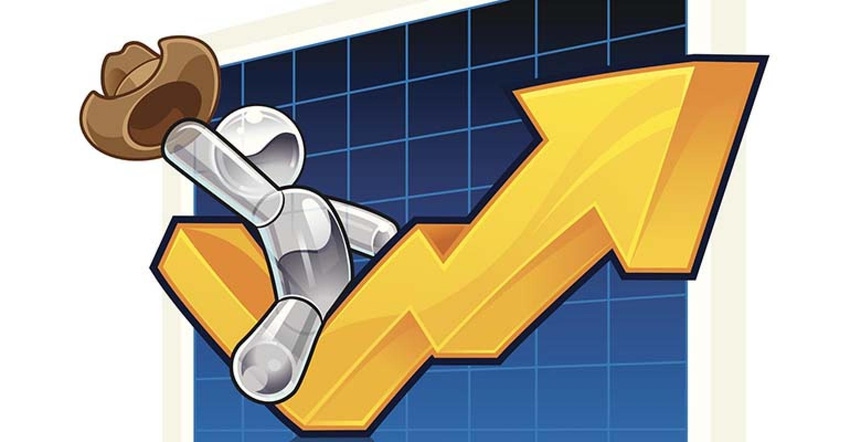October 4, 2021

In 2015 I had a couple loads of fats in a custom yard. I wanted to them show listed because it was crystal clear the market was going to go down. On a side note I thought everyone knew that, but today I realize that wasn’t the case.
Here’s how selling those fats went down.The feed yard called and told me packer #1 wasn’t bidding cattle that week. In my mind I thought “no kidding! They have almost a million of their own and they don’t want mine!?” Packer #2 had enough cattle to fill their kill week for the next two weeks. Packer #3 had no interest in bidding on my pen. Well how convenient for packer #4.
Know who to call
Packer #4 made a decent offer. I could make it work. The problem was the bid was only good if they could have the entire show list. My ability to sell my cattle was in someone else’s hands, and odds were that someone had no clue what they were doing. And sure enough someone turned the bid down and I couldn’t sell my cattle.
I was upset for sure. I knew who to call back then and got on the phone and got my cattle sold to packer #4. I share this story to let everyone know I get it. I’ve been there too. Even though I’ve been through it, more than once, I have a different view point than the rest. I am going to share it this week and it will be abrasive for some.
Packers' expenses
I see this stuff on social media from time to time about how the packers are making a killing.I agree, they seem to be doing alright. Here’s my issue. I will see a meme that says something like this. Packer sells boxed beef for $296.11. 930 pounds at that price is $2,753. They buy a 1400 pound fat cow for $123 or $1722. It goes on to point out the packer is making over $1,000 per head while we are going broke.
Interesting to me how the carcass weight is over 900 pounds and is compared to a 1400 pounds fat. Dressing percentages have gotten better since the last time I had fats.
Next thing is we complain our expenses are going up and we can’t make any money. Yet in the packer example their expenses are not subtracted out. Comparing a net margin to a gross margin is like the weight example above. Last time I was at a packing plant was over 10 years ago. When I was there they had a building that cost money to build and maintain. They had employees that need to be paid. Machinery that cost money to operate, and maintain. They use water and electricity, so there are utilities. The list goes on. Why are their expenses never subtracted in these memes?
The cool kids wanna play the blame game with the packer. Okay, lets take a look at that. The feed yard sells fats this week at $123, and buys back 820 pounds steers at $157. This trade as a Return On the Gain of negative $.18 per pound. It’s the packer’s fault the feed yard now owns over valued eight-weight steers? They made the feed yard do it?
Rate of gain vs. Cost of gain
This week I listened to cattle feeders blaming the packer while buying those eight weight steers. Yet when the nine weight heifers sold for $127 they didn’t bid on them. Those feeder heifers had a ROG that was $.30 higher than the COG or put another way $160 per head profit.
The packer is doing sell/buy marketing and winning. They sell their over-valued product of boxed beef, and replace it with under-valued fats. The feed yard is trying to do buy/sell marketing and losing. They buy an animal, feed it for a while and hope, maybe even expect some trickle down from the packer, to get more for it than they have in it. Betting that the price will go up enough to bail you out is gambling. Sell/buy requires skill. A skill that can easily be learned. There is a need for this skill, that is why Wally Olson and I teach marketing schools.
Sell/Buy/Trade
Lets look at the Stocker operator that sold that eight weight steer. He needs to replace it and did a sell/buy trade replacing it with a 510-pound steer at $174. He has a ROG of $1.29 or $90 per head profit. This person helped the market when he did this trade. He gave the feed yard what they wanted, which was the over-valued eight weight. If he sells them what they want he’s helping them. He then helped the cow/calf guy by buying up is five-weight steers. Should we be mad at this guy too since he’s making money?
Next is the cow calf guy. He sold those five weight steers for $887 per head. The calf the cow hasn’t given birth too has to replace that steer he just sold for less than $887. If that rancher feeds that cow 6 bales of hay this winter she will have consumed $840 worth of hay. The cow calf guys want to join the cool kids in blaming the packer. If I have this right the packer caused the drought forcing him to feed that hay? No, that’s not right. It was free will and the burning desire to hold on to those cows that’s causing him to run in the red.
Crashing the market
These people are always looking back to 2014 prices and blaming someone for crashing the market. I started this off by stating everyone should have seen the correction coming. Gordon Hazard had a great quote: “no one can throw a stone so high it doesn’t come back down.” I remember my great grandfather telling me “bull markets have long tails.” A healthy market is always searching for equilibrium. It will go up and down in a general upward direction. This sets up price relationships and the sell/buy marketers know how to generate positive cash flow from these relationships no matter if the market is going up or down.
Some people want Congress to fix these problems. An act of Congress can take a long time. Can these people hang on long enough for Congress to act? Thing is we can learn how to do sell/buy marketing much quicker than Congress will act. It all boils down to personal responsibility. Sell/buy is built on that, while blaming is just deflecting that personal responsibility.
I already covered some of the price relationships and VOG for the week. The VOG is still good up to eight hundred pounds. Feeder heifers had a much better VOG than steers this week. There is now interest in buying flyweight cattle. Their VOG is still higher than the COG, it’s just not as high as it has been.
Feeder bulls were 7-25 back, southern markets were under-valued again this week. Replacement quality heifers caught a 7 dollar premium. Unweaned cattle were 7-15 back. This time of year some buyers hold off on buying bawlers as long as they can. A friend called me this week and told me that when the auction he was at started selling calves about 5 buyers got up and went to the café, then came back when the auction got back onto yearlings.
About the Author(s)
You May Also Like






